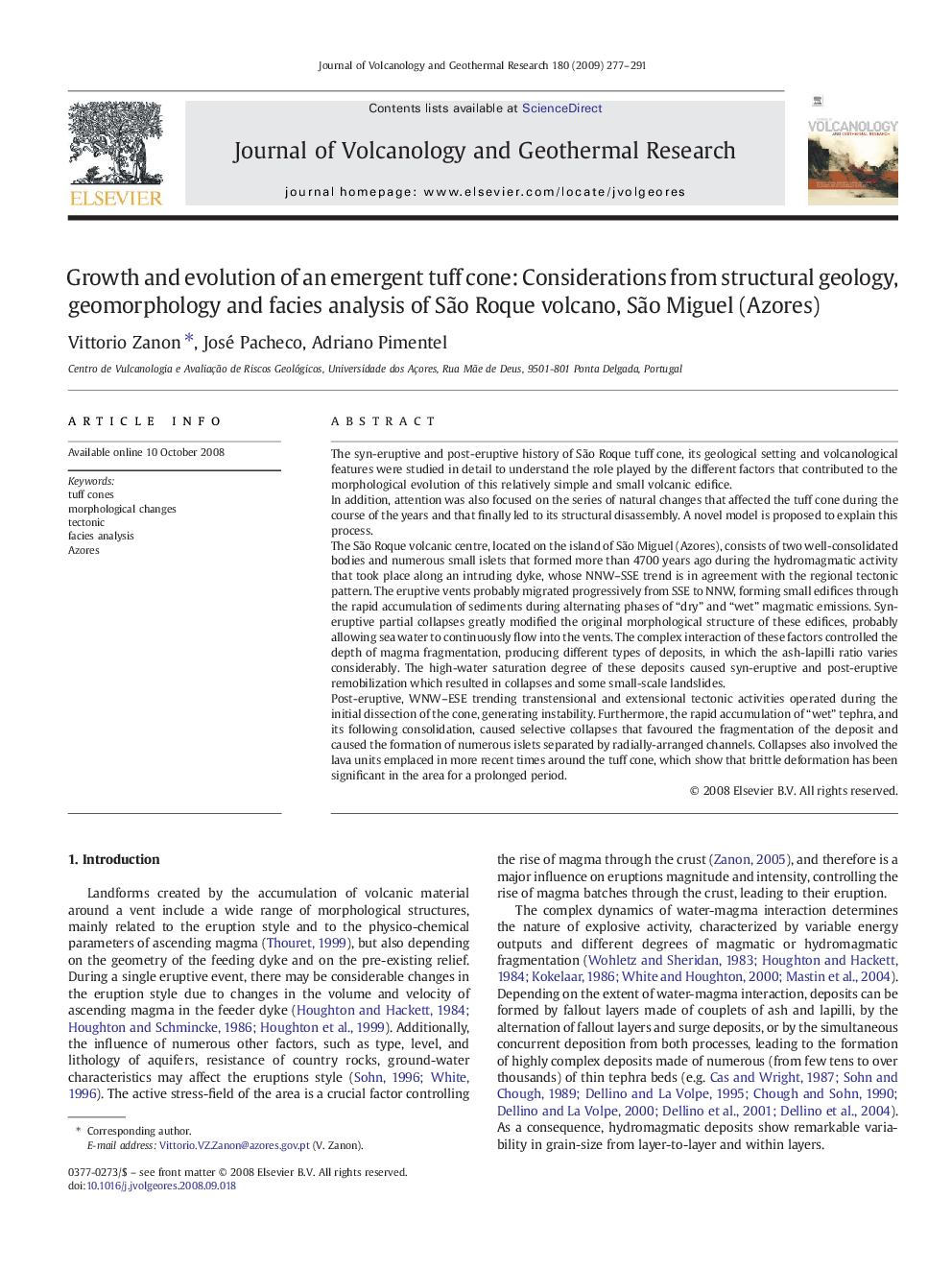| کد مقاله | کد نشریه | سال انتشار | مقاله انگلیسی | نسخه تمام متن |
|---|---|---|---|---|
| 4714398 | 1638442 | 2009 | 15 صفحه PDF | دانلود رایگان |

The syn-eruptive and post-eruptive history of São Roque tuff cone, its geological setting and volcanological features were studied in detail to understand the role played by the different factors that contributed to the morphological evolution of this relatively simple and small volcanic edifice.In addition, attention was also focused on the series of natural changes that affected the tuff cone during the course of the years and that finally led to its structural disassembly. A novel model is proposed to explain this process.The São Roque volcanic centre, located on the island of São Miguel (Azores), consists of two well-consolidated bodies and numerous small islets that formed more than 4700 years ago during the hydromagmatic activity that took place along an intruding dyke, whose NNW–SSE trend is in agreement with the regional tectonic pattern. The eruptive vents probably migrated progressively from SSE to NNW, forming small edifices through the rapid accumulation of sediments during alternating phases of “dry” and “wet” magmatic emissions. Syn-eruptive partial collapses greatly modified the original morphological structure of these edifices, probably allowing sea water to continuously flow into the vents. The complex interaction of these factors controlled the depth of magma fragmentation, producing different types of deposits, in which the ash-lapilli ratio varies considerably. The high-water saturation degree of these deposits caused syn-eruptive and post-eruptive remobilization which resulted in collapses and some small-scale landslides.Post-eruptive, WNW–ESE trending transtensional and extensional tectonic activities operated during the initial dissection of the cone, generating instability. Furthermore, the rapid accumulation of “wet” tephra, and its following consolidation, caused selective collapses that favoured the fragmentation of the deposit and caused the formation of numerous islets separated by radially-arranged channels. Collapses also involved the lava units emplaced in more recent times around the tuff cone, which show that brittle deformation has been significant in the area for a prolonged period.
Journal: Journal of Volcanology and Geothermal Research - Volume 180, Issues 2–4, 10 March 2009, Pages 277–291